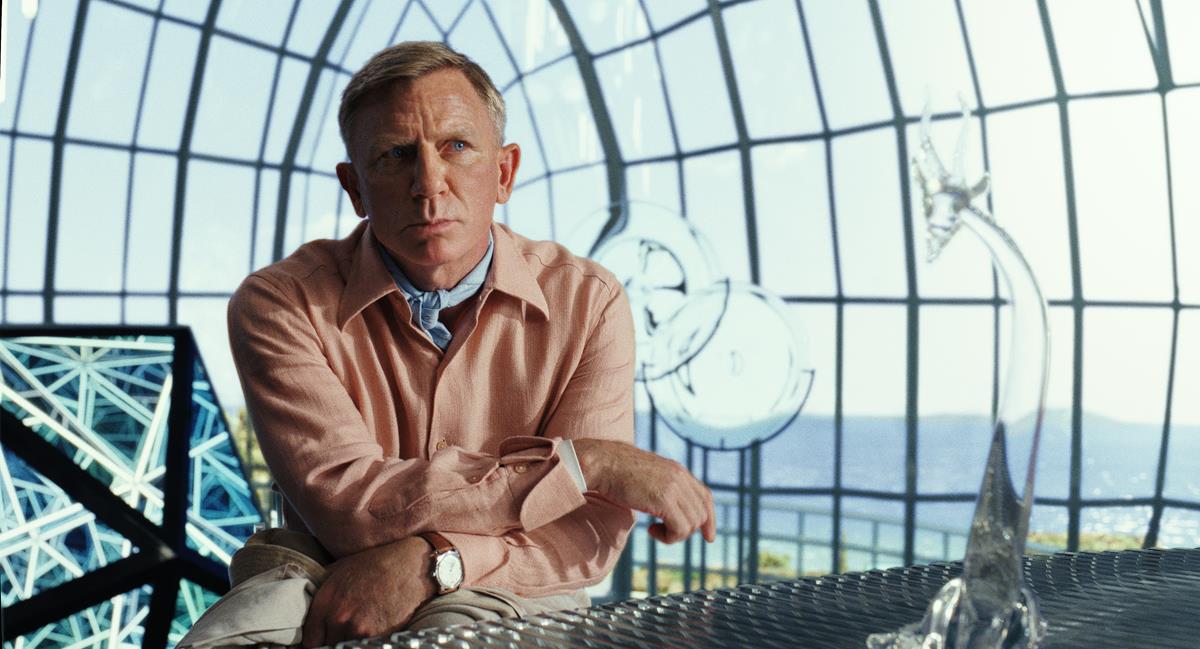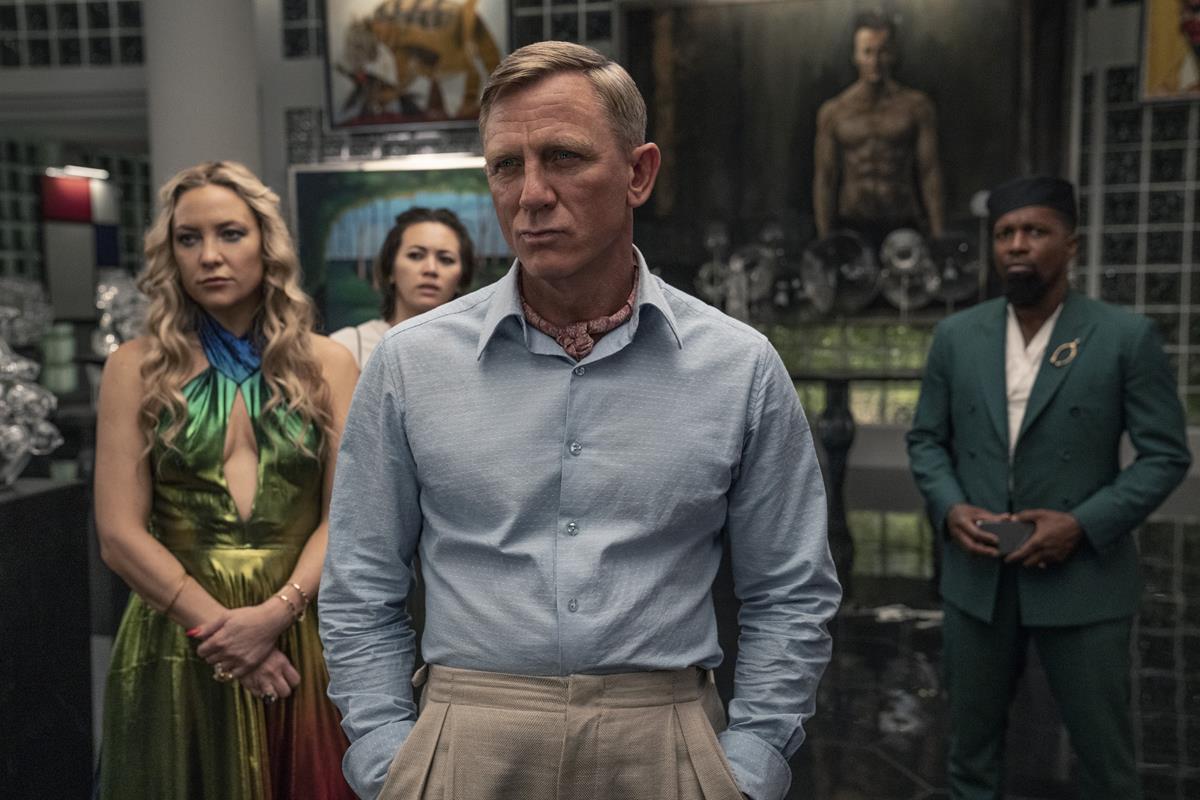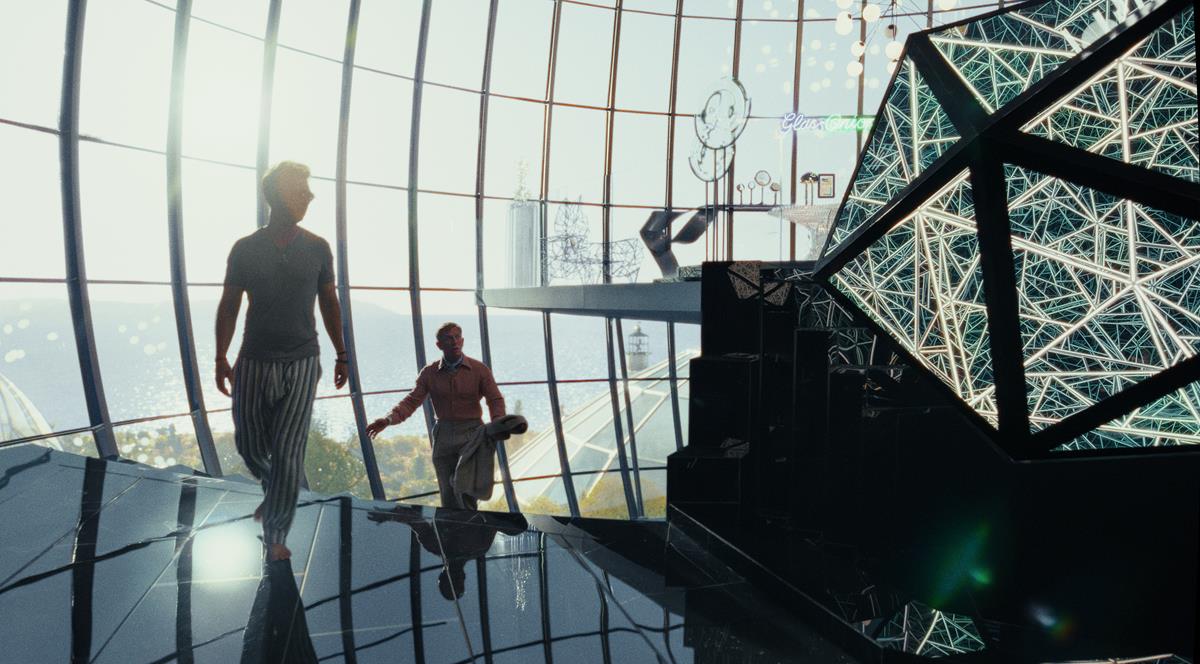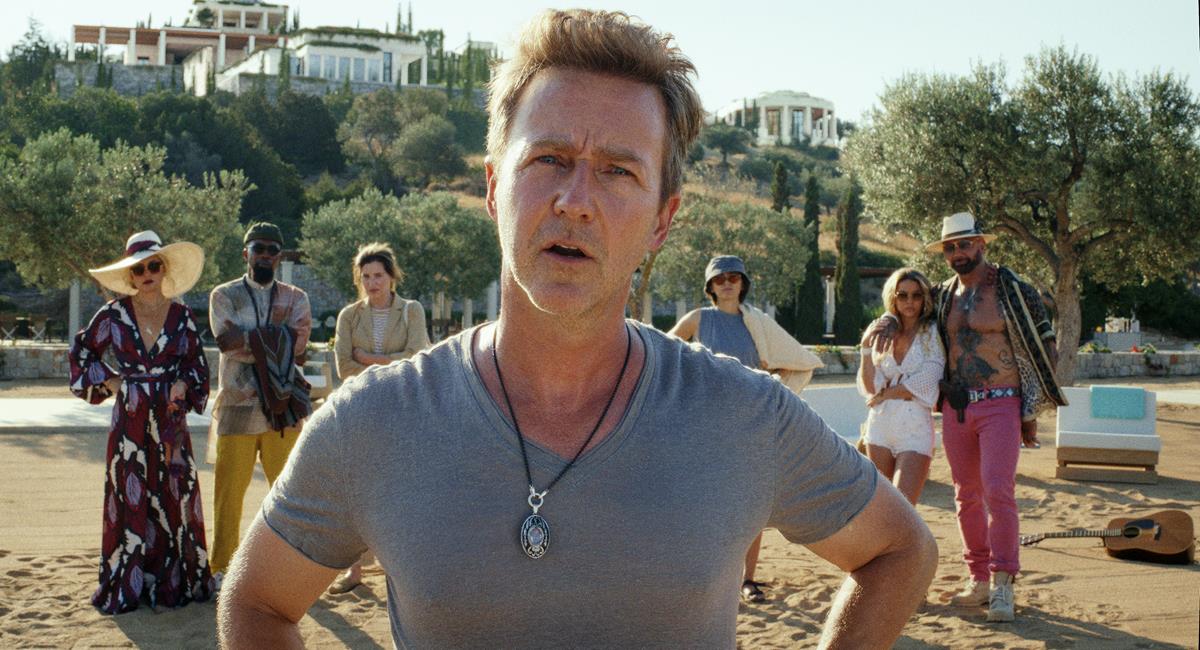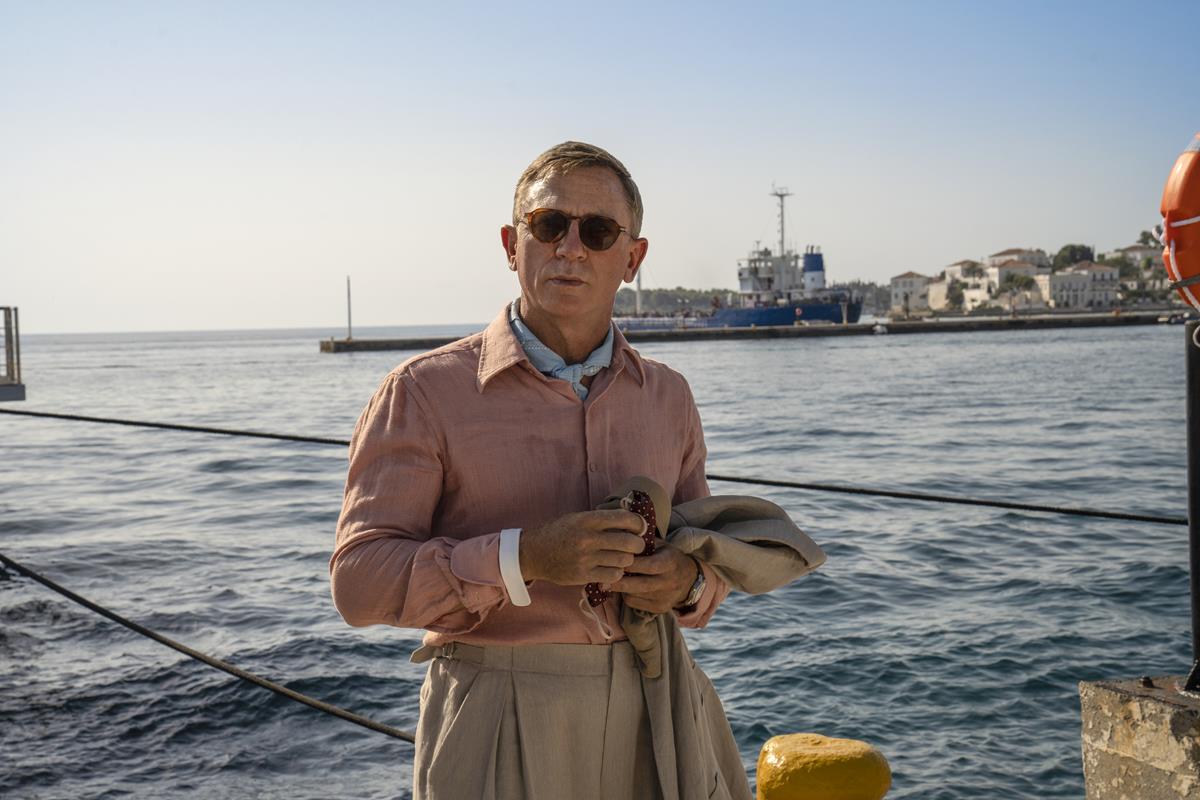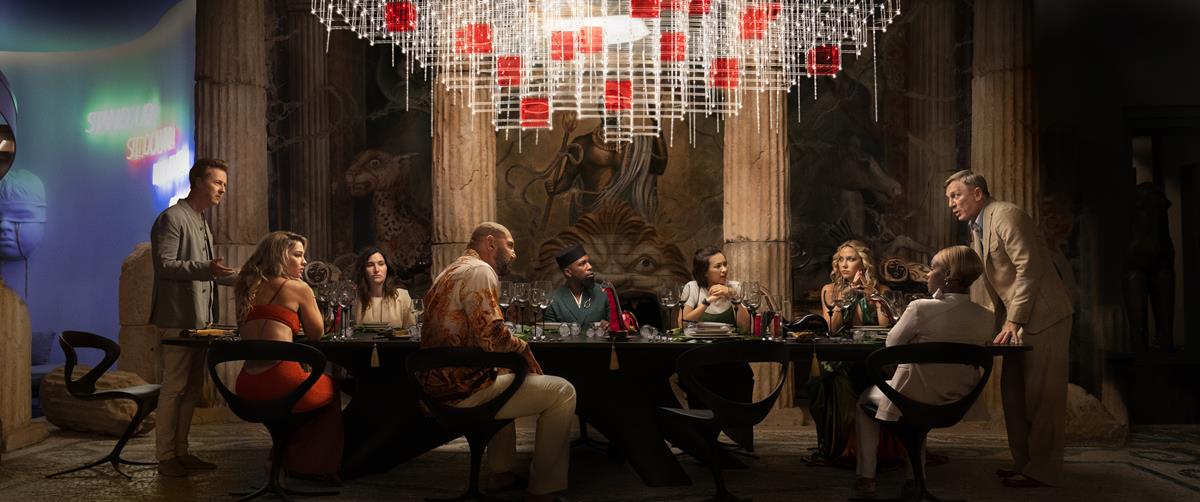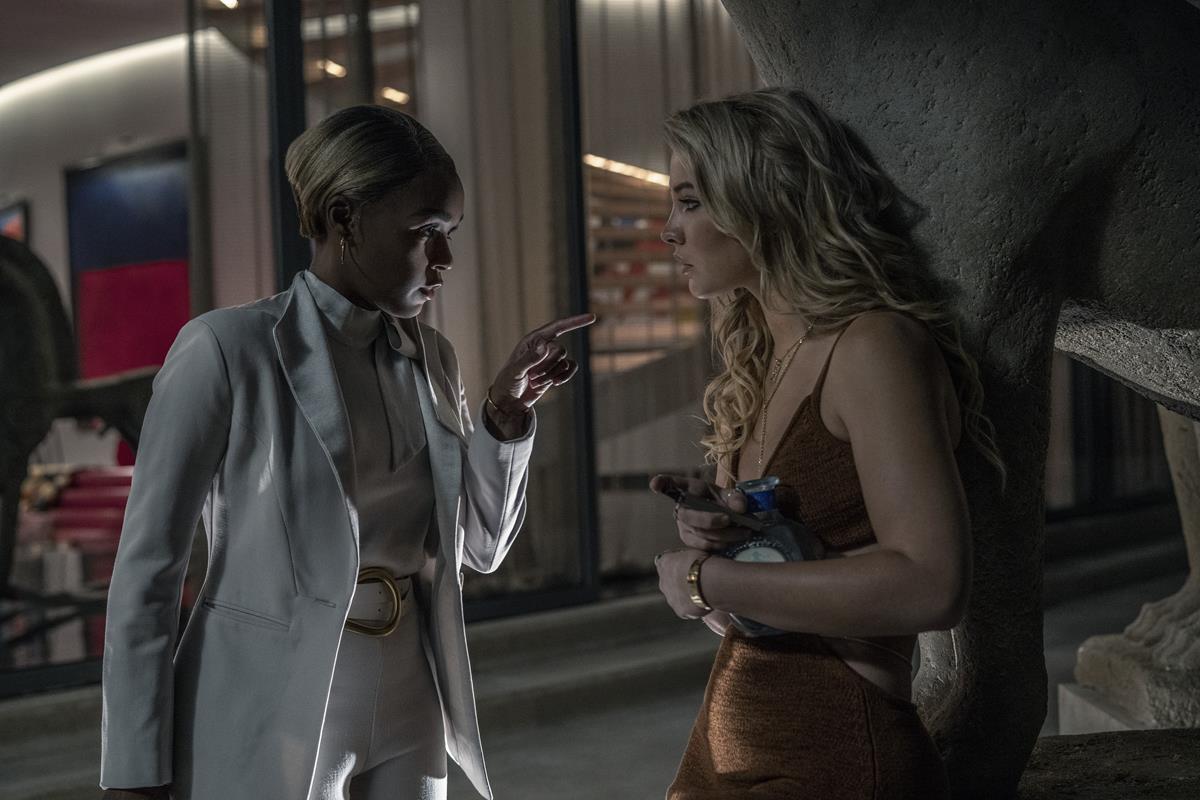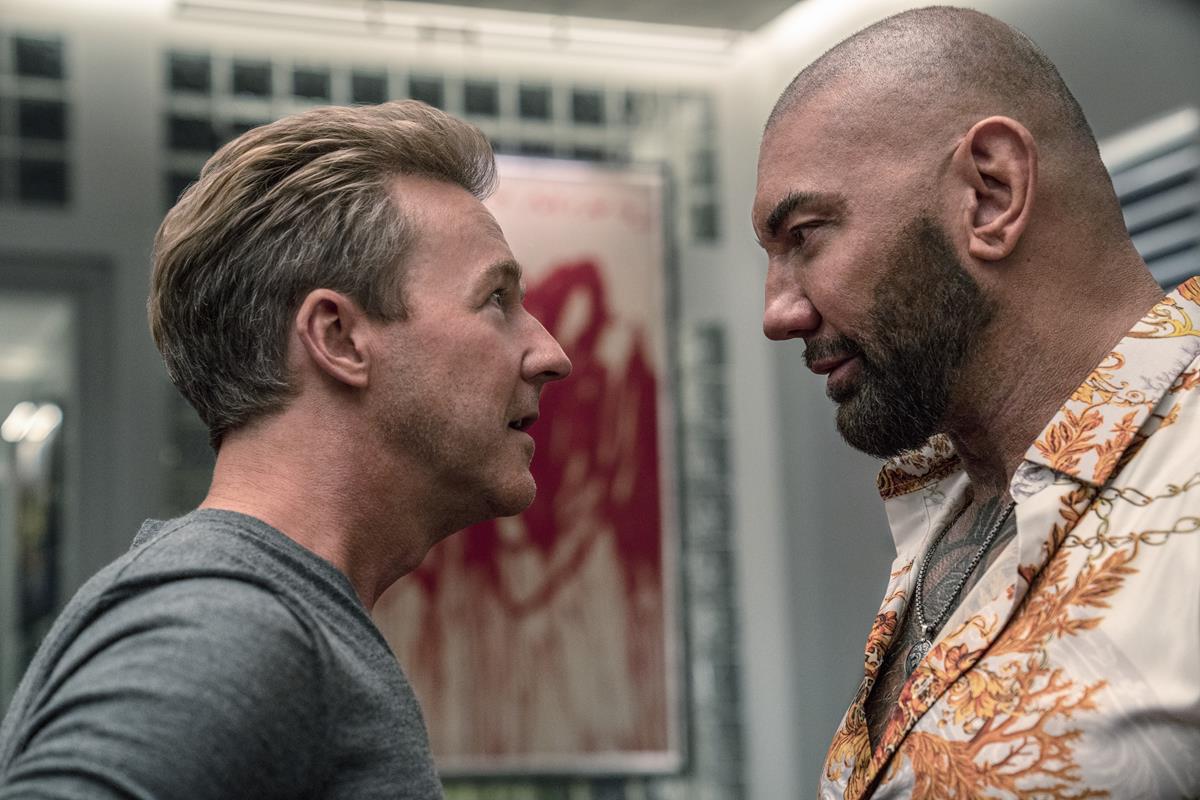TL;DR
- Film editor Bob Ducsay, ASC, discusses the layers of structure and sleight-of-hand behind “Knives Out: Glass Onion.”
- Beginning with 2012’s “Looper,” writer-director Rian Johnson has collaborated with Ducsay for more than a decade.
- To help avoid reshoots during post, Ducsay was embedded with the production team while shooting on location in Greece.
People who seek to explain how to make successful whodunit movies usually compare them to a careful construction of something — a recipe, perhaps, or a puzzle. Writer-director Rian Johnson of Glass Onion: A Knives Out Mystery expertly spins those plates of cast, suspense, plot, comedy and drama, but has a secret weapon in his movie-building: his film editor of more than a decade, Bob Ducsay.
Ever since taking on editing Johnson’s Looper in 2012, Ducsay has brought his guile and organizational prowess to the partnership, and they were never needed more than for the growing Knives Out series of movies.
Leslie Combemale at the Motion Picture Association’s The Credits has it right when describing Ducsay’s vital part in the success of the franchise, “It is Ducsay, working in partnership with Johnson, who must maintain the story’s nuance and attention to character to preserve the very finely calibrated balance required by a whodunit.”
READ MORE: “Glass Onion: A Knives Out Story” Editor Bob Ducsay on Cutting a Razor Sharp Whodunit (The Credits)
In fact, having Ducsay at his side from the beginning was crucial for The Last Jedi, Johnson tells Variety’s Jazz Tangcay.
“Editing a movie of that size and scope in terms of the VFX work, the post-production process is so much more exponentially complicated. It really becomes a different thing.” Yet despite the grand scale of the film, the characters and stories still needed to work.
Ducsay himself celebrates the successful partnership, “I think one of the most important things, and I don’t wanna say learned, but appreciated about Rian, is how in the construction of the edit, he places such a high emphasis on simplicity. I’ve always thought that was just generally a good goal. Why do you cut? What is it that you’re trying to do by, in a 24th of a second, switching what the audience is seeing?”
READ MORE: Rian Johnson and Bob Ducsay on Editing Down the 4-Hour ‘Looper’ Cut and Filming ‘Glass Onion’ — Creative Collaborators (Variety)
The new movie, Glass Onion, is another tribute, just short of an homage, to Agatha Christie’s books. Especially in the way she would introduce a new book by ignoring what came before. Johnson told a press conference that her story-washing was the way he was able to continue his interpretation of the genre. “The mode in which we were thinking to keep making them was always not to continue the story of the first one, but to treat them the way Agatha Christie treated her books and to do an entirely new mystery every time, a new location, new rogues gallery of characters,” he said.
“It’s not just a change of whodunit. She was mixing genres. She was throwing crazy narrative spins that had never been done in whodunits before. She was really keeping the audience on their toes. Every single book had a whole new reason for being. So, sitting down to write this one, that was kinda the marching orders.”
However, there’s a particular challenge in presenting a sequel even if it’s based on a clean-slate story. Ducsay explained the challenge to Glenn Garland on the Editors on Editing podcast.
“When it’s a sequel it’s especially difficult because people will think, is it as good as, better or worse than the first movie. To me that was asking a lot and I really felt it. You want to bring the same level of delight to the audience that you gave them in the first movie,” he said.
“We wanted to be really honest with the audience to the point of if you watched it a second time you would notice so much in plain sight that you didn’t see the first time. So that’s the trick, you need to know where the audience was looking at a particular time, what was the audience thinking as well.”
Ducsay used friends and filmmaking colleagues to give him feedback on how his edit was working by throwing preview parties. “So not your typical audience. But they can help identify things that they think will be an issue and also pitch suggestions of how you might fix something.”
READ MORE: Editors on Editing w/“Glass Onion: A Knives Out Mystery” Editor Bob Ducsay (Pro Video Coalition)
The editor expanded on the idea of placing clues in plain sight in an interview with The Hollywood Reporter’s Carolyn Giardina.
“It was important to us to make sure that the audience didn’t feel cheated,” he said, repeating the idea that the filmmakers wanted to be “as honest as we could be with the audience. We wanted to leave as many things in plain sight as possible without tipping our hand too much. And that really is a tremendous challenge. You really have to understand where people [in the audience] are looking [and] what they are thinking about. And if you know these things or if you have a really good idea of these things, it becomes easier to understand just what you can give away and what you have to withhold. We started getting bolder as we went on, because we were getting away with a lot of things. And when I say ‘getting away,’ it’s not trying to dupe the audience — it’s just putting the information out there and having a good idea that they can’t see it.”
READ MORE: How ‘Glass Onion’ Editor Bob Ducsay Placed Clues in Plain Sight So Audience “Didn’t Feel Cheated” (The Hollywood Reporter)
Cinema is particularly good at playing with time. You just assume you’re in the present when you’re watching something but it could be in another time period, which sometimes creates complications in the edit. “With Glass Onion we had a couple of things that we had to finesse because it was causing confusion not for a huge portion of the audience but enough that it concerned us. Then you have to understand what it is that’s causing them to not be where you want them to be at this moment.”
These complexities needed unpicking on a daily basis during the Glass Onion shoot in Greece, one of the reasons Ducsay was embedded with the production, as he explained to Matt Feury on The Rough Cut podcast. “Essential for Rian is that the editor be on location but it means you have to work at great speed and be thorough; which is hard to do,” he said.
“But we put a particular focus on guidance while the movie is being photographed so he can come in and see how things are progressing. Are we missing any coverage or is there some story point that maybe felt strong on the page but is a little bit more diffused when it’s been photographed. The goal is to come out of the shoot with little or no additional photography needed.” Interestingly, both Glass Onion and Knives Out didn’t have any additional photography.
“All these actors are giving you wonderful things, but sometimes it’s too big, sometimes it’s too small. So we might realize we really need to change a take, so we need to find something that is less of a thing, something that’s smaller, or sometimes it’s just taking it out because it’s the line that does the damage, not the way it was performed. It’s the greatest fun of a film like this when you have a big ensemble cast of great actors across the board. Every single one of them just gives a brilliant performance, but I get to go in there and tune things.”
Ducsay concluded on this chapter of time in the Rian Johnson universe, “Ensemble movies are much more challenging from a character standpoint, you have to keep a lot of balls in the air. You want to get this meal just perfect, all the right flavors and spices and everything just at the right level and it has become over the year my favorite thing about editing as I love actors and I love what they bring as in the detail of character.”
READ MORE: Glass Onion – a Knives Out mystery (The Rough Cut)
Speaking with Ducsay in Deadline’s video series The Process, Johnson revealed that learning how to collaborate with an editor wasn’t something that necessarily come easily to him.
“Johnson famously began making films on tape at a young age, editing them in-camera, and later went on to cut his feature directorial debut, Brick, as well,” Deadline film reporter Matt Grobar notes. “He admits in his chat with Ducsay that he was frustrated as he pressed on in his career by the notion of having to cede control of the editing process to someone else, after having for so many years had his own hands on the material.”
The writer-director described the initial awkwardness he felt about the process as “like playing the piano by telling somebody what keys to press.”
One solution Johnson landed on was to build “elaborate” LEGO structures in order to distract himself from interfering. “If I don’t keep my hands busy, I will go insane while we’re editing,” he said.
“Once I learned the collaborative nature of it and how to work with you, as opposed to through you, it became something where it was additive… just like my relationship with Steve [Yedlin], who’s my cinematographer, or any of the other HODs,” Johnson told Ducsay. “It becomes something where the added voice, the added perspective, the time it takes to talk through it was something that added to the finished product, as opposed to being an obstruction.”
READ MORE: Rian Johnson & ‘Glass Onion’ Editor Bob Ducsay On The Art Of Engineering The Whodunit And Why Johnson Builds Lego Sets While Ducsay Cuts – The Process (Deadline)
Next, Watch This:
Next, Listen to This:
LIGHTS, CAMERA, ACTION! SPOTLIGHT ON FILM PRODUCTION:
From the latest advances in virtual production to shooting the perfect oner, filmmakers are continuing to push creative boundaries. Packed with insights from top talents, go behind the scenes of feature film production with these hand-curated articles from the NAB Amplify archives:
- “Decision To Leave:” Park Chan-wook’s Love Story/Detective Story
- Fantastic Fantasía: Making Alejandro González Iñárritu’s “Bardo”
- “The Banshees of Inisherin:“ Martin McDonagh Tells a Wonderful/Terrible Tale
- Control and Chaos: Todd Field on “Tár”
- Family Pictures: James Gray’s “Armageddon Time”
- She Stoops to Conquer: Gina Prince-Bythewood Goes to War for “The Woman King”
- The Revolution Will Be Televised: Making the Immersive, Explosive “Athena”


